Accident Hotspots to Avoid on Long Island
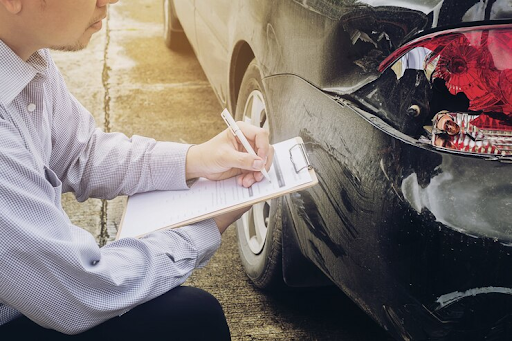
Table of Contents : Accident Hotspots to Avoid on Long Island The Long Island Expressway (LIE) Northern State Parkway Southern State Parkway Route 110 Jericho Turnpike Sunrise Highway Construction Zones Conclusion Long Island, known for its scenic landscapes and bustling communities, also has its share of accident hotspots. Navigating these areas can be treacherous, with high traffic volumes and complex road designs contributing to frequent accidents. Knowing these hotspots can help you stay vigilant and safe on the road. If you do find yourself in an accident, consulting a Long Island car accident lawyer or a Long Island construction accident lawyer can be crucial in protecting your rights and securing compensation. The Long Island Expressway (LIE) The Long Island Expressway, also known as I-495, is notorious for heavy traffic and frequent accidents. Stretching from Queens to Riverhead, it is one of the busiest roads on Long Island. The high-speed limits, combined with frequent construction zones, create a hazardous environment for drivers. Traffic congestion and aggressive driving behaviors further increase the risk of accidents. If you’re involved in a collision on the LIE, a Long Island car accident attorney can help navigate the complex legal landscape and fight for your compensation. Northern State Parkway The Northern State Parkway is another major thoroughfare with a high incidence of accidents. This parkway’s narrow lanes and winding design make it particularly dangerous, especially during peak traffic hours. Limited visibility and sudden lane changes can lead to serious accidents. Drivers should exercise extreme caution and maintain safe distances from other vehicles. Should an accident occur, consulting a Long Island car accident lawyer is essential to ensure your legal rights are upheld. Southern State Parkway The Southern State Parkway has earned a reputation as one of the deadliest roads in New York. Its sharp curves, narrow lanes, and heavy traffic contribute to numerous accidents each year. Speeding and aggressive driving are common issues that exacerbate the danger. If you find yourself in an accident on this parkway, a Long Island car accident attorney can provide the expertise needed to handle your case effectively. Route 110 Route 110 is a critical north-south artery running through the heart of Long Island. This road is notorious for its busy intersections and high traffic volume, particularly around the commercial districts in Melville and Farmingdale. Frequent stops, heavy pedestrian traffic, and complex intersections increase the risk of accidents. If you’re involved in an accident here, a Long Island car accident lawyer can help you navigate the aftermath and pursue the compensation you deserve. Jericho Turnpike Jericho Turnpike, or Route 25, is a major east-west route known for its high accident rate. Construction zones along Jericho Turnpike can also pose significant hazards, leading to severe accidents. In the event of an accident, especially one involving construction zones, a Long Island construction accident lawyer can be invaluable in addressing the specific legal challenges you may face. Sunrise Highway Sunrise Highway, or Route 27, stretches across the southern part of Long Island and is another hotspot for accidents. The highway also runs through several densely populated areas, adding to the complexity and risk of driving on it. If you’re involved in an accident on Sunrise Highway, consulting a Long Island car accident attorney can help ensure you receive appropriate legal support and compensation. Construction Zones Construction zones across Long Island, whether on major highways or local roads, are particularly hazardous. These areas often have reduced speed limits, narrow lanes, and abrupt stops, increasing the likelihood of accidents. For workers injured in these zones, a Long Island construction accident lawyer can provide the necessary legal assistance to navigate workers’ compensation claims and other legal remedies. Conclusion Being aware of accident hotspots on Long Island can help you drive more safely and avoid dangerous situations. But no matter how hard you try, accidents might still happen. If you find yourself in such a situation, whether on a busy highway or in a construction zone, it’s crucial to seek legal advice. A Long Island car accident lawyer or a Long Island construction accident lawyer from NYlawnet can provide the expertise and support you need to protect your rights and secure fair compensation. Stay safe and drive cautiously, but know that professional help is available should you need it.
Riding Safely: A Guide for Motorcycle Safety Awareness Month
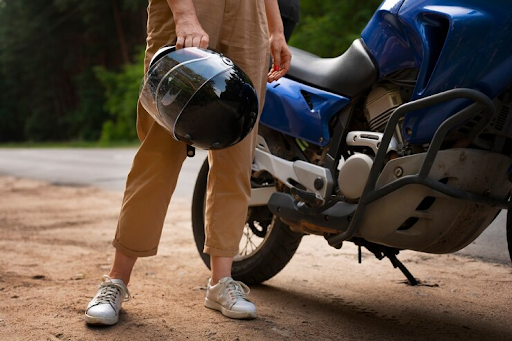
May marks an important occasion for all motorcycle enthusiasts and commuters alike—it’s Motorcycle Safety Awareness Month. As the warmer weather beckons riders to hit the open road, it’s crucial to emphasize the importance of safety for both riders and motorists. With the increasing number of motorcycles on New York’s roads, understanding the safety measures of New York accident lawyer, can make a significant difference in preventing accidents and saving lives. As an esteemed New York accident lawyer firm, NYlawnet recognizes the importance of promoting motorcycle safety. Our team is dedicated to advocating for victims of motorcycle accidents and ensuring they receive the compensation they deserve. In light of Motorcycle Safety Awareness Month, here are some essential tips to help riders and motorists stay safe on the road. Wear Protective Gear: Before revving up your engine, ensure you’re equipped with the proper gear. This includes a DOT-approved helmet, eye protection, gloves, long pants, and a durable jacket. Wearing protective gear can significantly reduce the severity of injuries in the event of an accident. Stay Visible: Motorcycles are smaller and less visible than other vehicles on the road, making them more susceptible to accidents. To enhance visibility, wear brightly colored clothing, use reflective tape on your motorcycle, and always ride with your headlights on, even during the day. Practice Defensive Riding: Anticipate potential hazards on the road by staying vigilant and practicing defensive riding techniques. Always maintain a safe distance from other vehicles, especially at intersections where many accidents occur. Be prepared to react quickly to sudden changes in traffic conditions. Obey Traffic Laws: Adhering to traffic laws is essential for all motorists, including motorcycle riders. Follow posted speed limits, signal your intentions when changing lanes or turning, and avoid reckless maneuvers. Remember, violating traffic laws not only puts your safety at risk but also increases the likelihood of legal consequences. Perform Regular Maintenance: A well-maintained motorcycle is less likely to experience mechanical failures that could lead to accidents. Routinely inspect your bike for any signs of wear and tear, including tire pressure, brakes, lights, and fluid levels. For your motorbike to be in the best possible shape, take quick care of any problems. Avoid Riding Under the Influence: Riding a motorcycle requires a high level of focus and coordination. Riding under the influence of alcohol or drugs impairs your ability to react quickly and make sound decisions, significantly increasing the risk of accidents. Always ride sober and designate a sober driver if necessary. Take Riding Courses: Whether you’re a seasoned rider or a novice, investing in motorcycle safety courses can enhance your skills and knowledge. These courses teach essential techniques for maneuvering safely in various road conditions and provide valuable insights into defensive riding strategies. Stay Educated: Stay updated on current laws and regulations pertaining to motorcycle riding in New York. Understanding your rights and responsibilities as a motorcyclist can help you navigate the road safely and confidently. Despite taking precautionary measures, accidents can still occur due to factors beyond your control. In the unfortunate event of a motorcycle accident, it’s crucial to seek legal guidance from an experienced accident attorney New York residents trust. At NYlawnet, our team of skilled lawyers is dedicated to protecting the rights of motorcycle accident victims and pursuing maximum compensation for their injuries and losses. If you or a loved one has been injured in a motorcycle accident, don’t hesitate to contact NYlawnet for a free consultation. Our compassionate and knowledgeable New York accident lawyer will provide you with personalized legal representation and guide you through every step of the legal process. This Motorcycle Safety Awareness Month, let’s work together to promote safe riding practices and reduce the number of motorcycle accidents on New York’s roads. By staying informed, vigilant, and responsible, through an accident attorney in New York we can create a safer environment for all motorists to enjoy the thrill of riding while minimizing the risk of harm. For further knowledge on an accident attorney in New York, book an appointment with NYlawnet.
What Are The Most Dangerous and Safest Modes of Transportation In New York?
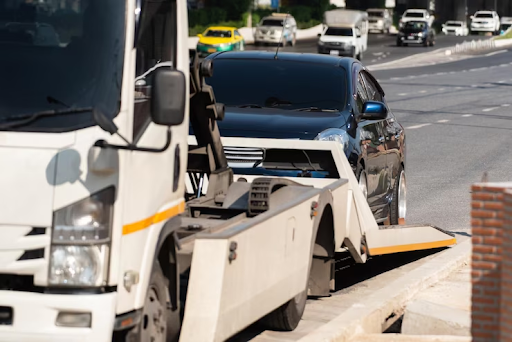
Table of Contents : What Are The Most Dangerous and Safest Modes of Transportation In New York? The Safest Steeds: Walking the Streets: Cycling Through the Boroughs: Floating on Ferries: The Perils of the Pavement: Taxi Turmoil: Subway Surprises: Streetcar Shuffle: Welcome, fellow city dwellers and curious minds, to the intricate web of transportation in the city that never sleeps – New York! In this urban jungle, where taxis zigzag through the bustling streets, and subway cars rumble beneath the sidewalks, understanding the accident layer in transportation becomes crucial for every commuter. Let’s embark on a journey to uncover the safest and most dangerous modes of transportation in the vibrant heartbeat of the East Coast and how can an accident lawyer in New York be helpful in case of an accident. The Safest Steeds: Walking the Streets: Despite the constant rush, there’s an undeniable charm in navigating the city on foot. Sauntering through Central Park or strolling down Fifth Avenue, walking offers a serene and healthy alternative to the chaotic vehicular dance. Just remember to look both ways before crossing those iconic yellow cabs! Cycling Through the Boroughs: Embracing the wind in your hair as you pedal through Brooklyn or across the Manhattan Bridge can be an exhilarating experience. With an expanding network of bike lanes and the introduction of Citi Bike, cycling has become a popular and eco-friendly choice. Just keep your eyes peeled for rogue potholes! Floating on Ferries: For those commuting between boroughs, ferries provide a scenic escape from the concrete jungle. With the Statue of Liberty as your co-passenger, ferry rides offer a tranquil escape from the bustling streets. Hold on to your hat, though; the East River winds can be quite playful! The Perils of the Pavement: Taxi Turmoil: Hailing a yellow cab might seem like second nature, but with their breakneck speeds and sudden lane changes, taxis top the list of hazardous transportation. While they may get you to your destination in record time, the ride can be a rollercoaster of near-misses and unexpected detours. Subway Surprises: The heartbeat of the city’s underground, subway system, is not without its quirks. From crowded platforms to unexpected delays, navigating the subway can be an adventure in itself. Mind the closing doors, and keep an eye on the platform gap! Streetcar Shuffle: Emerging as a popular mode of transportation in certain neighborhoods, streetcars bring their own set of challenges. Sharing the road with cars, cyclists, and pedestrians, these rail-bound carriages require careful maneuvering to avoid getting caught in accidents on New York’s streets. While some modes of transportation offer a serene escape from the chaos, others plunge us into the heart of the city’s frenetic energy. So, whether you’re walking on sunshine or caught in a taxi tornado, remember to stay vigilant and embrace the adventure that is transportation in the Big Apple. In the intricate dance of New York’s transportation landscape, where every step and every ride seems like a choreographed routine, there’s an unsung hero waiting in the wings – the accident lawyer in New York. The best one is Siler & Ingber, who can guide you in every way possible. These legal navigators can be your leading light when the city’s bustling streets take an unexpected turn.
How Is Uber’s Safety Strategy Effectiveness?
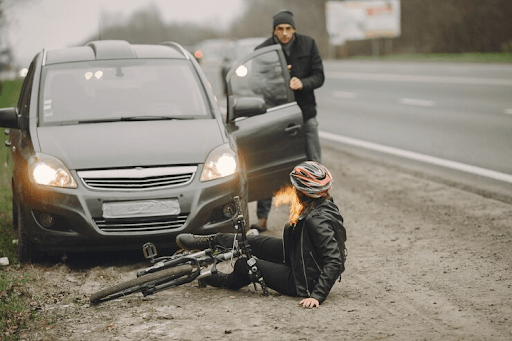
In recent years, Uber has faced scrutiny over the safety of its platform, particularly in the densely populated and bustling streets of Manhattan. With millions of trips being taken each day, ensuring the safety and security of both riders and drivers is a top priority for the ride-hailing giant. However, as the city that never sleeps continues to buzz with activity, accidents are inevitable. In this blog, we’ll go through Uber’s safety strategy in Manhattan and assess its effectiveness, all while keeping a keen eye on the role of a Manhattan Uber accident lawyer. Table of Contents : How Is Uber’s Safety Strategy Effectiveness? Uber’s Safety Initiatives: Background checks: Real-time ID Check: In-App Safety Features: Insurance Coverage: Effectiveness of Uber’s Safety Strategy: The Role of a Manhattan Uber Accident Lawyer: Uber’s Safety Initiatives: Background checks: Uber requires all drivers to undergo background checks to ensure they meet certain safety standards. This includes criminal history checks and driving record reviews. While this is a fundamental step, occasional lapses may occur, raising concerns about the thoroughness of the screening process. Real-time ID Check: In an effort to prevent account sharing and enhance passenger safety, Uber introduced real-time ID checks. Drivers are prompted to take a selfie before going online, ensuring that the person behind the wheel matches the account on file. This feature adds an extra layer of security to the platform. In-App Safety Features: Uber’s app includes various safety features, such as the ability to share trip details with friends or family, real-time GPS tracking, and an emergency button that connects users directly to local authorities. These features empower passengers to take control of their safety during rides. Insurance Coverage: Uber provides insurance coverage for both drivers and passengers in case of accidents. However, the adequacy of this coverage may come into question, especially in complex scenarios involving multiple parties. This is where the expertise of a Manhattan Uber accident lawyer becomes crucial. While no system can guarantee complete safety, it is evident that Uber has implemented comprehensive measures to enhance security within its services in Manhattan, striving to provide a safe experience for its users. Effectiveness of Uber’s Safety Strategy: While Uber has implemented commendable safety measures, accidents can and do happen. The effectiveness of Uber’s safety strategy in Manhattan is subject to ongoing scrutiny. Factors such as the accuracy of background checks, responsiveness to safety concerns, and the adequacy of insurance coverage contribute to the overall assessment. The Role of a Manhattan Uber Accident Lawyer: In the unfortunate event of an Uber-related accident, a Manhattan Uber accident lawyer becomes a crucial ally. These legal professionals specialize in navigating the complexities of rideshare accidents, addressing issues such as liability, insurance claims, and compensation for injuries. They play a vital role in ensuring that victims receive the support they need to recover physically, emotionally, and financially. Uber’s commitment to safety in Manhattan is evident through its multifaceted approach to risk mitigation. While the effectiveness of these measures is generally positive, the unpredictable nature of accidents requires ongoing assessment and improvement. In this dynamic environment, the expertise of a Manhattan Uber accident lawyer from Siler & Ingber’s team becomes invaluable, offering a lifeline to those navigating the aftermath of a rideshare accident in the city that never sleeps.
How Does Someone Find The Right Personal Injury Attorney?
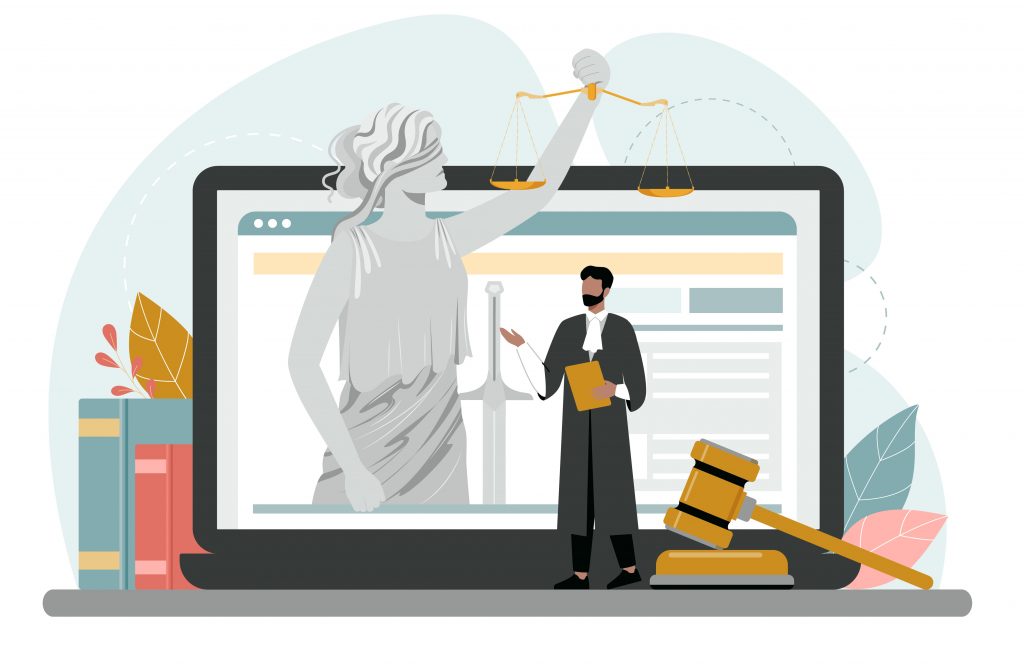
It might seem scary but you never know when you might need to get in touch with a personal injury attorney. Unfortunately, every single day accidents and injuries happen to many people who are careful and have done nothing wrong. The best thing that you can do to protect yourself and your family in the event of an accident is to find the right legal help, and that requires you to know how to find the right personal injury attorney. Choosing a personal injury lawyer can be a daunting process, but with these tips, you can learn the important aspects that you need to consider when comparing potential lawyers. The tips that we are about to tell you in this blog will help you narrow down your choices to choose the lawyer that is best for your case and would support you throughout the whole process. Here are a few steps which you should take when looking out for the right attorney for your personal injury case. Chalk down the Criteria that you Feel are Important to You When considering an attorney, it is essential that you think about certain criteria which are important to you. These could be – someone who collects a percentage of the recovered amount instead of charging an upfront fee or someone who works on a contingency-fee-basis. Set your criteria in such a way that it helps you narrow your search to the best personal injury lawyer. Evaluate the Experience of the Attorney you are Considering The experience of your attorney is really significant as that is what will determine the success of your case. An experienced attorney would be well aware of everything that goes into handling a personal injury case. They would know how to handle the biggest obstacles and the tricks to manipulate the insurance companies. Is the lawyer professional yet friendly? Are they willingly answering all your doubts and questions? Are they enthusiastic to get you the compensation that you deserve? Make sure they have a strong track record of success There might be many attorneys that have a lot of experience but still, they do not really have a strong track record of success. As you consider an attorney, always review their case results and ask them these questions:- Do they have any kind of experience in dealing with catastrophic injuries or even wrongful death claims, not just accidents that involved minor injuries? Are they willingly answering all your doubts and questions? Have they been awarded any awards for their cases or not? Are they offering any additional resources? Always consider the additional services that your prospective injury lawyer can provide. There are some lawyers that offer a higher level of assistance at almost every stage, hence creating less hassle for an overall smoother experience. How can Hiring a good Attorney Help? A good lawyer will make you feel heard; he/she would ensure that each and every angle of your claim is addressed so that it strengthens your case and they will give it their all to win the case for you and get the fairest amount of compensation. Make sure you do your homework well. Siler & Ingber is one of the best personal injury law firms in New York where you will be able to hire top-notch lawyers for your case. All their lawyers are qualified to file your case and successfully get you the compensation that you rightfully deserve. Get in touch with the team at Siler & Ingber today and get a free evaluation of your case.
How to handle A Wrongful Death Lawsuit

The emotional wounds caused by the loss of a loved one cannot be healed with money. However, if your loved one’s death could have been prevented, bringing a wrongful death claim can be beneficial. Without having to worry about paying medical bills, making up for missing wages, or dealing with other financial obligations, it can help you take care of your own grieving along with your family’s emotional demands. Let us understand what a Wrongful Death Case is. Similar to personal injury claims, wrongful death proceedings allow victims to receive compensation for losses they sustained as a result of another party’s negligence. In personal injury cases, the individual who was actually hurt brings the claim and seeks their own recompense. However, in wrongful death lawsuits, the wounded party did not survive the detrimental occurrence, therefore their family members may instead demand compensation. Grounds to file A Wrongful Death Case. Negligence: In wrongful death lawsuits, we must establish that the defendant’s carelessness, recklessness, or negligent conduct contributed to the relative of the complainant’s death in whole or in part. Violation of Duty: The claimants must be able to establish that the defendant owes the victim a duty in order to prevail in a wrongful death action. For instance, drivers have a responsibility to obey traffic laws and drive safely. Doctors and other medical professionals have a responsibility to keep patients healthy. The plaintiff must be able to prove that the defendant owed the plaintiff a duty and that this duty was breached as a result of their careless behaviour and attitude. Indemnities: The victim’s death must also result in quantifiable damages, such as hospital stays, medical bills, and funeral costs, in order to establish a case for wrongful death. funeral expenses, loss of earnings, Loss of patrimony, security, and direction; the victim’s pain and suffering before death are some other causes too. Who can register A Wrongful Death Complaint? The laws of your state will determine who is eligible to bring a wrongful death claim. In some states, only the deceased person’s spouses, children, and parents are eligible to pursue a claim. Other states permit any surviving relative who was receiving the deceased’s direct financial support to file. Inquire of your wrongful death attorneys on local laws in your area. What procedure to follow for A Wrongful Death Case? A wrongful death claim will go through a legal process that includes consultations, claims, and possibly a resolution. The matter will go to trial if the parties are unable to reach an agreement. The steps that must be taken are as follows: Speak with a lawyer. A wrongful death case could be exceptionally difficult to navigate. You should seek the advice of an experienced lawyer who specializes in matters like this. They will be able to help you at every stage of the procedure, from ensuring a personal representative is chosen and a claim is filed on time to figuring out who is at fault and pursuing the appropriate penalties. To produce the required papers, work with a lawyer. The death certificate and any other documents that might be related to the circumstances leading to the wrongful death must be obtained from the Department of Health in this phase. Obtain wrongful death compensation. You ought to receive the compensation you are due at the conclusion of the procedure so that you won’t have to worry about money while you are grieving. We at Siler & Ingber treat every case with the highest empathy, and we’re here to relieve your strain as you navigate this incredibly traumatic time. We cordially welcome you to get in touch with us and talk about your alternatives and determine the best course of action together.
How to avoid Winter Car Accidents?
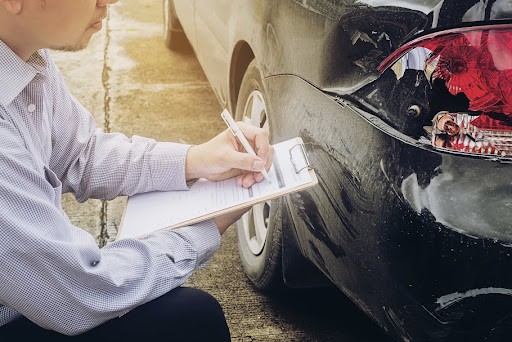
Low visibility and slippery roads make winter driving a challenge. Even if you’re an experienced driver, the harsh winter weather conditions can put your driving skills to the test. Furthermore, visibility is reduced on foggy days, so you must drive more carefully and attentively when faced with treacherous winter driving conditions. In recent years, the number of deadly road accidents has increased due in part to bad weather, reckless driving, and disregard for the law. Here are the most important recommendations to keep you safe while driving in the cold and snow: Cleaning Windshields and Windows from frosting. It’s essential to clean fogged-up windshields as soon as possible during the winter to avoid a slew of blotches. Dropping your windows for a minute will allow you to breathe in some fresh, dry air and can help prevent windshield fogging. For the best vision while driving, regularly clean the inside as well as the outside of your windows and windshield. The fogging of the windshield and windows from the outside is one of the dangers of winter driving. This can cause accidents and significantly reduce visibility. No Over-Speeding. Certainly, everyone enjoys the rush of driving at speeds more than 100 km/h. However, this stunt while driving in the winter is a severe NO. As due to the reduced visibility and fog that comes with winter driving on slick or icy roads, you should pay close attention to the speedometer. Driving slowly improves your reaction and stopping distance. There can be moments when you mistakenly think there isn’t a car in front of you. To avoid any unpleasant surprises, keep your speed under control and account for poor visibility. Keep a close and regular check on the tyres. Because the air in your tyres expands when it’s heated and contracts when it’s cooled, it’s typical for tyre pressure to drop in colder weather, endangering your ability to drive in the snow. To keep your tyres strong and healthy during the chilly winter months, check the pressure. Your tyres will operate at their peak efficiency and offer superior handling, reliable traction, and a more comfortable ride when they are properly filled. Prior to getting on the road, make sure you have completed the other items on our safety checklist in addition to keeping your tyres in good condition. In addition, use high-quality tyres to avoid any mishaps. Skid over the slide. It’s natural to panic and slam the brakes when you notice that your wheels are beginning to slide to one side. Don’t. Though modern braking systems reduce the likelihood that you may lose control, slamming on the brakes could still result in a collision. Apply the brakes on and gently nudge the car’s nose back toward the centre line. To ride the skid back to a safe position, let off the gas and brakes. Driving with a low beam. Using high beams while driving is quite uncomfortable for moving traffic and can be very dangerous for them because the intense light almost completely blinds them. Make sure your headlights are on low beams while traveling in the winter, especially during the day. Using high beams may seem like a smart idea, but it actually has the opposite effect. High beams often reflect the fog and reduce your visibility even further. Driving in the winter requires you to consider both your own safety and the safety of other motorists. How Can We Help? The greatest legal team in New York, Siler & Ingber, is available to assist you with any difficulties that arise during your legal battle for compensation, in case of any unfortunate happening. Get in touch with them today for a free evaluation of your case.
Benefits and Risks of Using the Center Lane
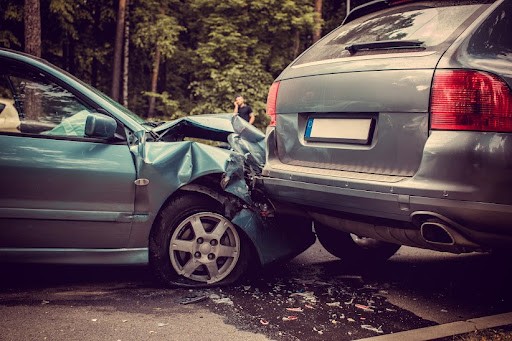
Let us first understand what a center lane is and what it is used for. You’ll have to make a left turn while driving at some point or another. Fortunately, there is an entire lane reserved to aid you in doing just that. Regardless of your driving expertise, it’s perfectly OK to have questions about what you can and cannot do in the center turning lane. Drivers are supposed to utilize the center turning lane to turn left into garages, parking spaces, and other lanes. You can also do a U-turn utilizing the lane if you need to cross the street in the other direction. To ensure that you are not breaching any traffic regulations, however, make sure to first check for signs that state that U-turns are not permitted. What are the benefits of using a Center Lane? While enriching the street’s pedestrian and rider experience, center lanes accommodate buses and streetcars at a potentially very high capacity and volume. Drop-offs, deliveries, unlawful parking along the edge of the road, as well as confrontations with bikers, and some turning manoeuvres, are all eliminated by center lanes. Some of the common benefits are; Crash reduction with fewer left-turn and rear-end collisions. There is more room for bicycle lanes, parking spots, bus stations, and other purposes when there are fewer lanes for pedestrians to cross. Simplifies side street left turns, the smoother flow of traffic. Less lane swapping. There are numerous advantageous uses for the space produced when completed as a component of a renovation. What are the risks of using a Center Lane? Though there are numerous benefits to using Center Lane, let us now take a look at some disadvantages that we may have to encounter. These lanes are frequently used by motorists making a left turn onto a major thoroughfare from a side street to halt and wait for a chance to merge. Additionally, some drivers who make a left turn from a side street use the two-way center left turn lane as a merging lane and never completely stop. There is a chance of a head-on collision in the two-way left turn lane if two motorists on the same boulevard decide to execute the same left-turn movement simultaneously. Sadly, a lot of individuals misuse center turn lanes. Driving in the center lane after making a left turn out of a parking lot is a common way to exploit it since it enables you to make a left turn even when there isn’t a gap in the traffic coming from the right. Drivers accelerate in the center lane in order to catch up to moving traffic rather than waiting for a space in it. Irate drivers will occasionally utilize these lanes to proceed dead ahead, cutting through traffic so that they can merge afterward or get to a left turn lane at a congested intersection faster. These applications may be risky. Center lanes can act dangerously as anything-goes lanes when traffic is heavy and drivers are agitated, which raises the possibility of head-on crashes and rear bumper. Therefore, it’s crucial to exercise extra caution when using this type of section in busy traffic. As we can see, the situation has both advantages and disadvantages depending on the whims of the drivers. We humbly ask that you always put your safety before the rush of adrenaline. To know further or to handle any such mishaps rightfully, contact Siler & Ingber without hesitation.
Can Carbon Monoxide Poisoning Impact Your Driving?

Every year, numerous fatalities occur across the globe as a result of unintentional carbon monoxide (CO) poisoning. The exhaust pollutants from motor vehicles are a significant contributor to many of these poisoning instances. All motorists must be aware of the risks posed by carbon monoxide poisoning and be able to recognize its signs when they appear. Since carbon monoxide is clear and has no flavour or aroma, it is almost impossible to detect. When taken in high doses or repeatedly, this silent killer can have severe effects on the body. Let us analyse the sources of CO to know it better Internal combustion engines, such as those used in fuel-powered motor cars, release carbon monoxide as a waste gas as a result of a chemical reaction that occurs when fuel (such as diesel or petrol) burns. When someone inhales carbon monoxide, it is taken up by the lungs, absorbed into the bloodstream, and circulated throughout the body. Big Question: When driving a car, is carbon monoxide poisoning possible? Yes, that’s the answer. Carbon monoxide poisoning from a vehicle can result from a variety of causes. Any circumstance that traps carbon monoxide after it has left a vehicle’s exhaust system or obstructs the exhaust pipe might result in carbon monoxide poisoning. Mechanical issues with the exhaust system might cause carbon monoxide to leak internally into the car before it has a chance to be properly vented, which is another significant factor. The following are some of the most typical causes of car-related carbon monoxide poisoning: Faulty exhaust and emission systems. Running the engine with snow or other particles in the exhaust. Inefficiently tuned engines. Using the engine or moving when the tailgate or trunk lid is open. Driving a vehicle with body damage Risk of carbon monoxide in older cars Your car might not have a catalytic converter if it is an older model. Poorly maintained automobiles are more prone to experience exhaust system leaks before the catalytic converter, which raises the danger of carbon monoxide poisoning. Such a leak would produce gas that has a very high quantity of carbon monoxide and could readily enter your car through cracks in the bodywork or open windows. Impact of CO Poisoning on Driving: The detrimental effects of carbon monoxide on the body can lead a person to get ill or die, but this is not the only way that this deadly gas results in fatalities. Since carbon monoxide poisoning causes both mental and physical symptoms, it can impair a person’s ability to drive and raise the likelihood that they will be in a collision or accident. A person’s ability to drive will be negatively impacted by carbon monoxide poisoning, according to studies, even in extremely mild situations. People who experience carbon monoxide poisoning have reduced reaction times, difficulty thinking fast or coherently, and are easily confused. These signs can occasionally be so subtle that a person may not be aware of their impaired driving skills or the danger they are in, until it is too late. Get checked out by a doctor if you consistently feel cognitively “cloudy” or physically ill while driving. Steps to avoid CO Poisoning: Now that you are aware of the dangers, let’s discuss what you can do to prevent carbon monoxide poisoning caused by a vehicle. Have frequent inspections performed on your exhaust and emission system: A hazardous build-up of carbon monoxide in the car can result from even a tiny leak. Now that you are aware of the dangers, let’s discuss what you can do to prevent carbon monoxide poisoning caused by a vehicle. Make sure your tailpipe is free of mud, snow, ice, and debris especially when the weather is bad. Even if the garage door is open, you should never heat up your car or keep the engine ignited in a closed space. If removing ice or snow from a car, never leave a child inside while the engine is still running. In order to prevent other vehicles’ exhaust fumes from entering your automobile when you are stuck in congested traffic, close your air vents. Every year, carbon monoxide poisoning leads to fatalities from vehicles that are inadvertently left running in garages. So, to assist you with any challenges in your legal battle, get in touch with the top New York legal firm, Siler & Ingber. They’ll watch out that your legal rights aren’t ultimately compromised.
When Is A Restaurant Liable for Injuries and Illnesses?

New York City has over 24,000 restaurants which makes it the city with the most restaurants in the world. Food is an important part of the New York culture which is why every day thousands of people eat in restaurants across the city. Along with being a place of contentment for most people, restaurants also pose hazards to both their employees and customers if their premises are not maintained properly. From burn injuries caused by hot food to collisions with a fast-moving waiter who is carrying plates of food, accidents that occur at a restaurant can cause serious injuries. Whether you are an employee or a customer who has suffered injuries while at a restaurant, then you are entitled to compensation. You can contact a restaurant injury lawyer to help you pursue your personal injury claim. Injuries & Illnesses for which Restaurants can be held Responsible When you enter a restaurant, or are working in one, it is the duty of the restaurant to keep you safe from any kind of injuries or illnesses. There have been many cases where an individual has suffered injuries while at the restaurant. Here are some common injuries and illnesses which the restaurant can be held liable for:- Food Poisoning/ Food-Borne Illnesses After Eating at a Restaurant Every restaurant in New York City is obligated to follow some local and industry-mandate food safety regulations which are intended to protect the customers/public from any kind of food-borne illnesses. Food poisoning or food-borne diseases can result in hospitalization and even death in the worst cases. The causes of food-borne illness /food poisoning can be:- Improper food handling Serving undercooked food Unhygienic kitchen conditions Contaminated food from not washing hands Serving stale food Food-borne illness can be harmful to everyone but it could be particularly dangerous for people with low immunity, such as kids or the elderly. In case you or a loved one has suffered a food-borne illness after eating at a restaurant, you need to file for compensation immediately. Slips and Falls at Restaurants It is the legal duty of all restaurant owners to maintain their premises so that they are safe for the employees as well as the visitors. Unfortunately, slips and falls are the most common accidents that occur in restaurants. They are caused because of:- Spilt food and drinks on the floor which have not been cleaned/moped Extra wet floor with no warning Torn carpeting Broken flooring or staircases All these can result in severe injuries which are a result of negligent maintenance on the part of the restaurant owner. Burn Injuries The food served at a restaurant is mostly over 130 degrees and the hot beverages at around 140 degrees. If this hot drink/food is spilt by the restaurant servers on the customers then they can rapidly cause third-degree burns. The negligence of the restaurant server or the owner holds them liable for these burn injuries. Choking Choking on food mostly occurs when the food is contaminated by a foreign object or if the food is not prepared properly. Not calling medical assistance right away after a choking incident also makes the restaurant liable as they have violated their duty of care. Ask for Help from a Skilled Attorney If you have suffered an injury or illness as a result of visiting a restaurant for a fun meal or are a restaurant employee who went to work like any other day, then you may be entitled to monetary compensation for your lost wages due to the illness or injury, medical bills, out-of-pocket expenses, pain and suffering, etc. Get in touch with the Siler & Ingber team of attorneys today as they will be able to help you get compensation from those responsible. Call today to schedule a free consultation.

